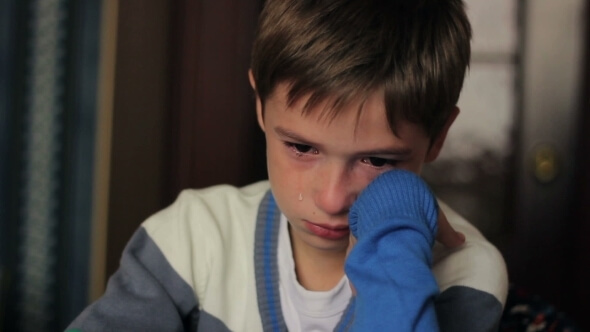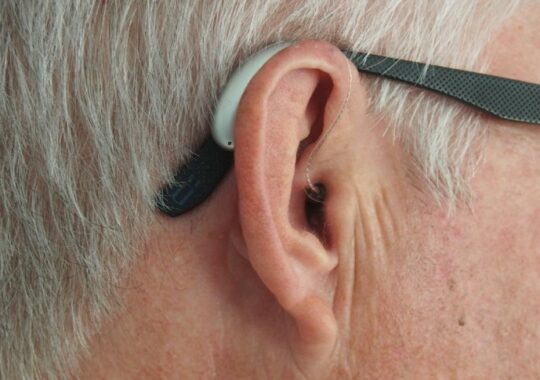Child depression symptoms give helpful advice
Child depression symptoms are not easy to diagnose. Depression has become a severe disease in recent decades. That affects not only the western industrial nations but also countries of the so-called Third World.
Child depression symptoms specialists usually diagnose depression for the first time in the teens. In recent years, more and younger adults are affected by this diagnosis. Depression can get any person of any age.
For depression, age is not a hindrance. It can affect anyone at any age, from infancy to late life. According to recent surveys, depression is particularly common in two age groups. Once in adolescents aged 12 to 18 years. The reason is excessive pressure and stress. In the second group of the elderly over 60 years, the goal is increasing loneliness and general living conditions.
Global statistics show that, according to the Anxiety and Depression Association of America, 2-3% of children aged 6 to 12 in primary school can develop severe depression.
Child depression symptoms little boy clings to his mother
ADAA
The ADAA says that 6 to 8% of adolescents could have the disease. There are approximately 2.8 million adolescents aged between 12 and 17 years had at least one major depression over the last four to five years.
According to the National Alliance on Mental Illness estimates, 13% of adolescents aged 8 to 15 years, and 21.4% of adolescents aged 13 to 18 sometime in their lives suffer from a severe mental disorder. Corresponding to the Centers for Disease Control and Control, 17% of students have seriously considered suicide in the past 12 months. The college years are also increasingly difficult.
Depression rates in teens
The Department of Drug Abuse and Mental Health examined the data. She found that 8.4% of full-time students aged 18 to 22 had severe depression. 8.2% of the other young adults also did so, although they did not seem to have any stress. But the pressure also exists in many different forms. Estimates suggest that about 9.3 million adults in recent years had severe suicidal thoughts. Of these, college students aged 18 to 25 had the highest percentage, 7.4%.
Child depression symptoms
Depression is not common in children under the age of 12, but it does occur. Depression in children has different symptoms than the “normal” bad mood. These fluctuating moods have every child in his development phases. As a long-time youth coach, I know only too well that can go very fast. You believe that you have met a completely different child two minutes earlier. So, what causes depression in young ages?
Causes of depression in childhood can be:
1. The physical condition
2. Events in life that are important for the children. Deaths are traumatic in most cases!
3. What’s happening inside the family: Has anyone with whom noise.
4. Genetic weaknesses play a role
5. The prevalent chemical disruptions are always present, but not alone blame
6. School situations: mobbing, bullying, etc.
Child depression symptoms little girl with teddy in hand is sadly standing in the street
Child depression symptoms in preschool children
Even the 3 to 6-year-old children can already develop a depression that is difficult to diagnose. The signs of depression in kids If a child of this age is uncharacteristically sad for more than two weeks for no apparent reason that may be the first sign of distress.
The signs of depression in kids
The child now seeks more than usual the physical closeness to mother or father. It can quite badly separate from both and has phases of listlessness. Other indications for a depressive development may be that the child no longer wants to play in kindergarten. It retires to a corner and does not participate in the group activities anymore. The child now complains more often about headache and abdominal pain or other physical complaints. Now, think of a depressive episode in this child. It is possible to make a depression test for kids.
Child depression symptoms questionnaire self-test
A medical checkup can make it clear whether these physical ailments are just physical or an indication of depression. To be able to make a correct diagnosis, it is essential to observe the child over a more extended period. Then the doctor con establishes the medication for teenage anxiety and depression.
Just because a child feels sad does not mean that it has significant depression. In such a symptom, the duration is the deciding factor. As described earlier, the length of more than two weeks is questionable. If the child does not feel like doing sports, playing games with friends or family, it can indicate a kind of depression.
Child depression symptoms in school-age
Depression in schoolchildren rarely occurs suddenly. The course is usually insidious. The child has inferior academic performance, as evidenced by the decline in grades. It withdraws more and more and is impassive. These are indications of depressive development. The appearance of the children also changes. Change of appearance:
- The gesture is less expressive; the facial expression is sometimes as rigid, and the posture (e.g., hanging shoulders) express the depressed mood in this way.
- In contrast to the 3-5-year-old preschoolers, parents can ask the child how it feels. But that does not mean that these questions always give you certainty about the presence of depression.
- Elementary students, because of their abilities, can be able to talk about their feelings and experiences. To talk about her sadness and other negative emotions is often difficult for her.
Child depression symptoms important facts
1. Childhood depression is a risk factor for the development of several other mental symptoms and disorders.
2. About 2% of preschool and school-age children are affected by depression.
3. Suicide is the third most common cause of death among adolescents aged 10 to 24 years.
4. It is no one trigger for this condition in children. There may be various reasons. There are biological, psychological, chemical, or environmental factors in question. All this is part of their development.
5. Interpersonal Therapy (ITP) and Cognitive-Behavioral Therapy (CBT) are the main approaches to treating childhood depression.
Child depression symptoms girl with a blank look
The difference between depression and mood swings
Depression in a child is not comparable to a prevailing mood sway. Many trainers and parents know about the problem. First of all, the child does not want to practice, then a few minutes later, it is essential for training. What happened in the minutes? The adults do not know. Sure, a child is sad or feels disturbed by something. This sadness or mood has nothing to do with depression.
We speak of depression in children when sadness lasts for a long time (> 2 weeks). In such a phase, the child feels misunderstood, alone, without hope, helpless and worthless. In this stage of ups and downs, the child is not itself. Depression disturbs every second in the child’s life. Daily life is an entirely different life. Child depression symptoms here are that a child does not eat anymore and is tired. The schoolwork, if they have ever been fun, will be left lying. Children do not play anymore and vegetate into the young day. This behaviors also has consequences for family life.
Causes of depression in teens and tweens
Large mood swings are normal at the age of 12 to 18 years. With the onset of puberty, the incidence of depression increases, especially in girls. Observations in recent years show an increase of milder forms of depressive disorders. The reasons are different. It may be societal demands on the autonomy development of young women who come too early and often overwhelm these girls. Also, hormonal factors play a role.
Last but not least, school-related burdens (less in terms of performance requirements, but, for example, bullying, cyberbullying)
The symptoms of depression in adolescents and young adulthood are similar. There are more often tired thoughts. In isolated cases, a depressive illness is a background for a suicide attempt.
Young people have a large number of burdens, be it school, first friends, apprenticeship, etc. So, parents and teachers helping teens with depression as good as they can.
It may be societal demands on the autonomy development of young women who come too early and often overwhelm these girls. Besides, hormonal factors also play a role. Last but not least, school-related burdens (less in terms of performance requirements, but, for example, bullying, cyberbullying)
Child depression symptoms Girl with hands on head is sitting with her back to the tree
Gender differences in child depression symptoms
Boys and men generally try to hide their mood lows rather than girls. That’s why sometimes depressed boys behave differently than girls do.
Signs of depression in teen girls are different. The girls retire more often. A depressed boy stands out due to quarrelsome, riot, or property damage. At first, many parents and teachers do not think of depression in these behaviors. The necessary mood among boys and girls is similar. They do not see any chances for a good future for themselves. They feel worthless and have little or no self-confidence.
Depression = inattention?
When a child has ADHD (it is unusually distracting, impulsive or “hyperactive”), it shows lower self-esteem. This feeling connects the patients with a negative future expectation. Depressed children are often careless. But there are two different disorders that doctors need to treat differently. If depression also causes ADHD, both diseases the doctor should handle differently according to the guidelines for child and adolescent psychiatry.
Child depression symptoms boy sitting on the stairs with a white banner
Summary of child depression symptoms:
Alterations and symptoms of childhood depression
1. The appetite changes from way too little
2. Sleep is getting worse and restless
3. Less sleep = less life energy
4. More mood swings and much more crying
5. No more desire to play
What do parents have to do now?
Contact a specialist immediately for therapy for teenage depression. Also, what depression medication for teens he will use!
1. Recommended and you have to insist on adding a psychologist. He should be familiar with childhood depression.
2. An intensive exchange with parents, teachers, and coaches, as well as grandma and grandfather, is a reasonable basis for an assessment.
3. Psychological tests
4. Additional information from teachers, friends, and classmates should also be helpful.




